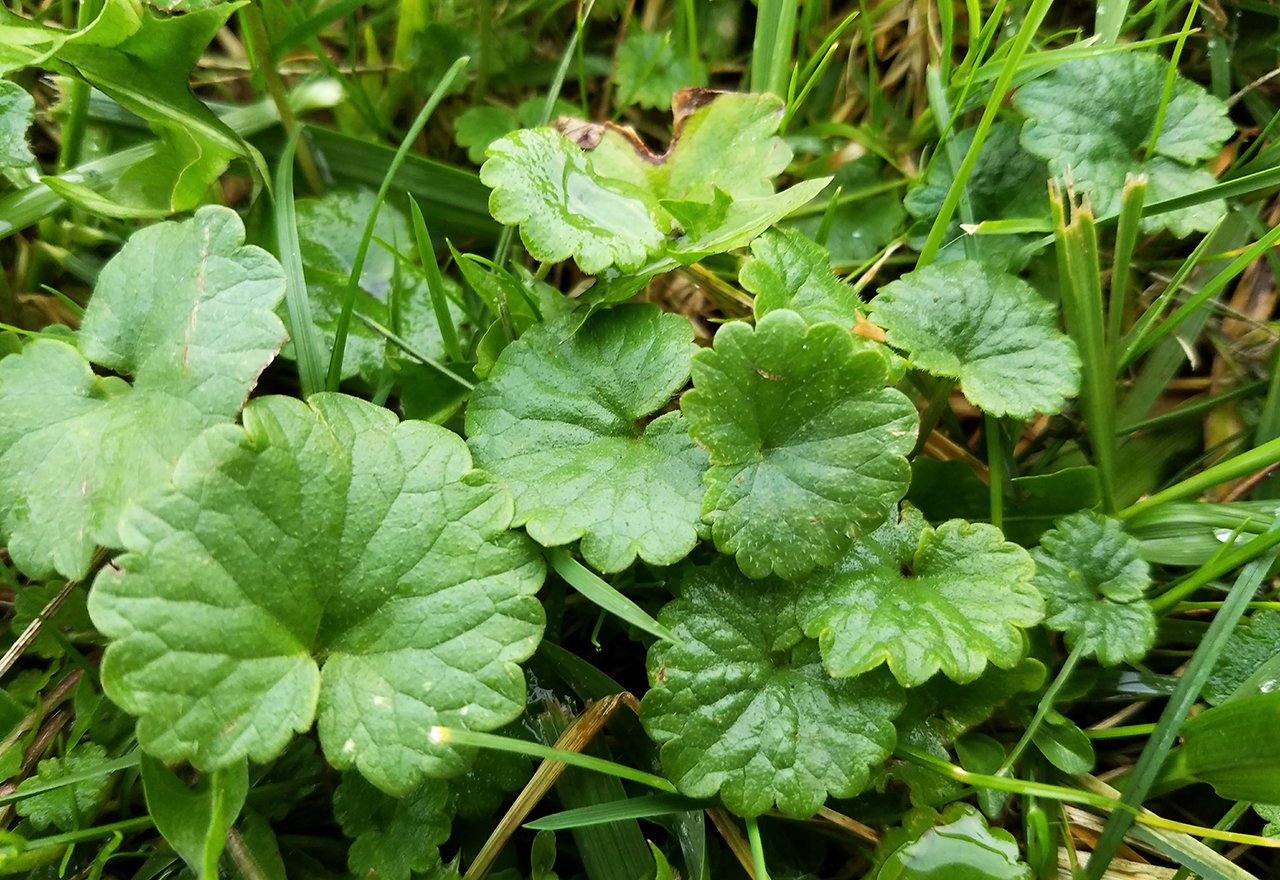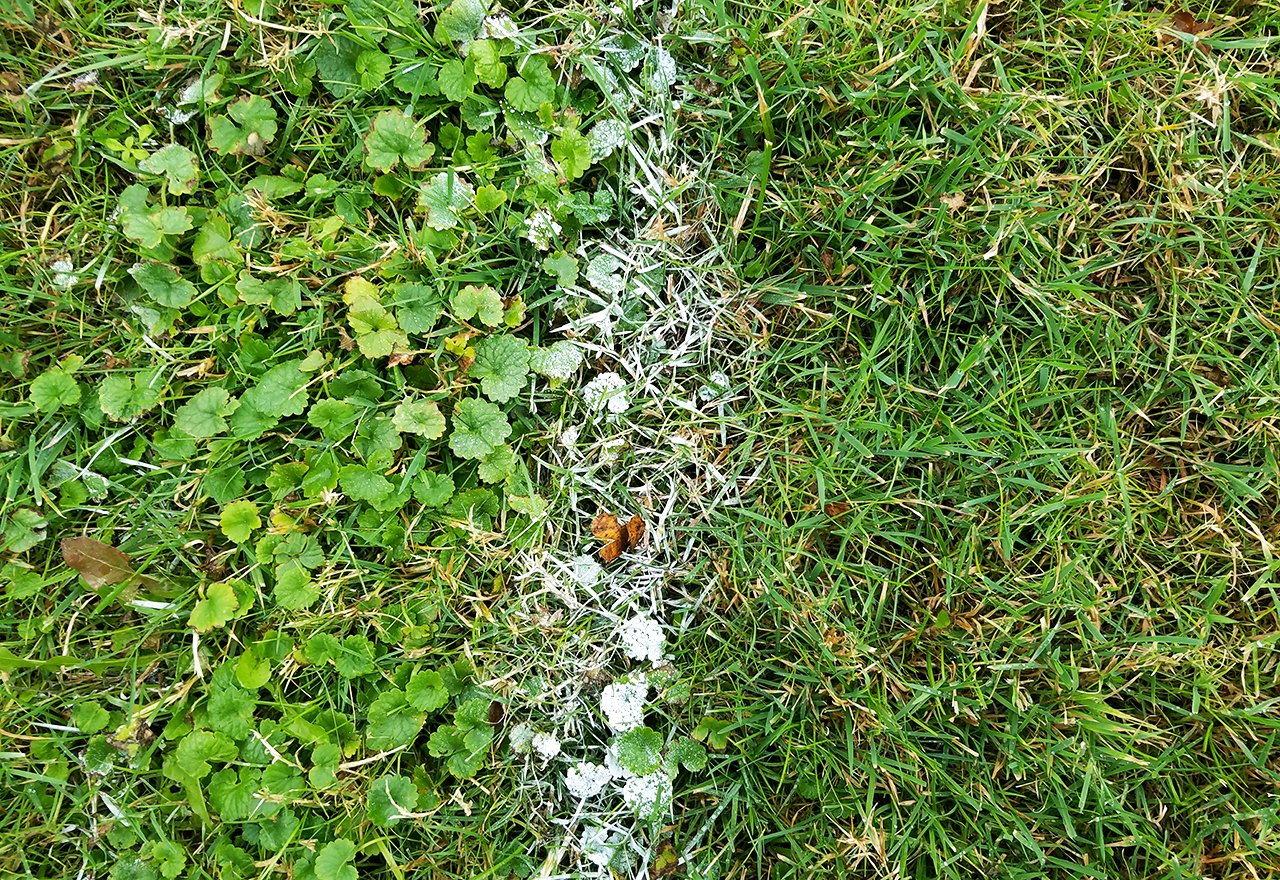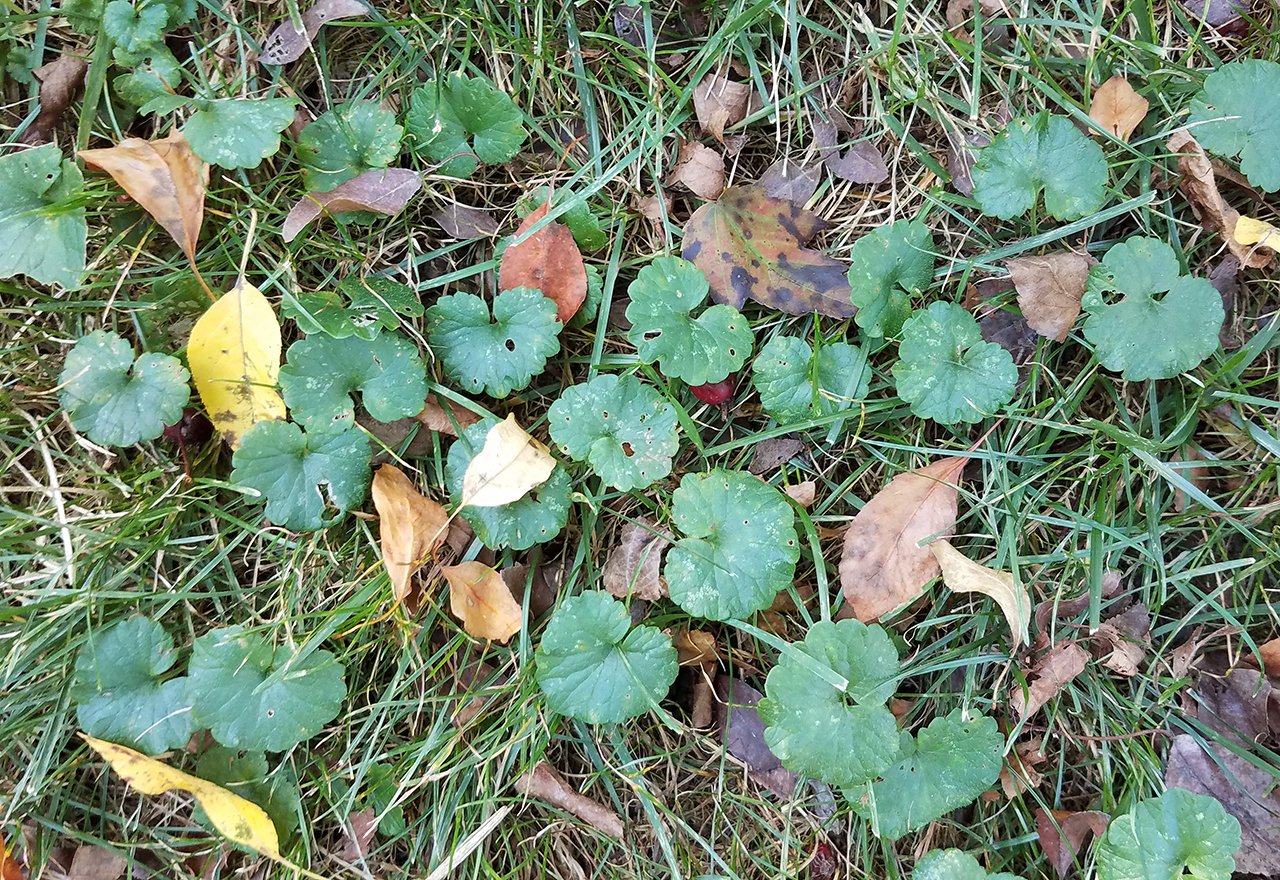A Member of the Mint Family, Ground Ivy is a Fast Growing Perennial Weed

Ground Ivy (Glechoma hederacea) is known by many names including Creeping Charlie, Creeping Jenny, field balm, cats-foot, ale-hoof, and inch weed (because it spreads an inch a day). This weed is very hardy and is found in gardens, lawns, sidewalks and driveway cracks, as well as along building foundations. Unfortunately, this creeping weed is a perennial and so remains year after year and usually continues to be green during milder Winters. The weed is in the mint family and has a distinct smell when disturbed or cut. Ground Ivy has unique square stems, opposing round to heart shaped leaves with toothed or serrated edges. Spring flowers are pink to purple and funnel shaped with three petals. Pollinators practically flock to the delicate flowers because they are some of the earliest to bloom in the Spring.
Ground Ivy reproduces via seeds, creeping stems, and rhizomes - so easily and quickly. Creeping stems, or runners, can grow up to seven feet long! The plant prefers shady, moist conditions but will grow just about anywhere. It grows low to the ground and so often is below a lawn mower’s reach. When left unchecked, Ground Ivy can grow in dense mats that will crowd out any other plants. Roots are shallow.Ground Ivy is native to Europe and was intentionally introduced to America as early as 1672. It has spread to most of North America with the exceptions of very northern Canada, Nevada, New Mexico, and Arizona.
Ground Ivy prefers moist soil and seems to start in shady areas, but will spread into full sun areas too. It easily takes over any open soil.
Ground Ivy can be really hard to get rid of without toxic chemicals that are harmful for pollinators, kids, pets, and waterways. Hand pulling can remove Ground Ivy, but you have to be careful to get rid of all of it and stay on top of the chore. A dethatching tool or a very strong rake can help, but be sure to remove pieces from the soil when done.
Good Nature Organic Lawn Care’s Organic Foundation Lawn Care Program will keep your lawn healthy to help naturally discourage Ground Ivy, but if you already have Ground Ivy in your lawn, and don’t like it, you’ll need to do a little more to fight against it. Additional Spring and Fall Natural Weed Buster applications can also help, however, if you really want to slow down your Ground Ivy, we have a special nutrient mix, featuring Boron, that we can apply multiple times in the Fall to feed your lawn, while discouraging your Ground Ivy. If you're interested, feel free to contact our office. Finally, if you absolutely hate Ground Ivy, the last resort, but often most effective approach is to do spot chemical treatments in the Fall. Below you will see a side by side image taken after our Natural Boron Ground Ivy Treatments were administered.

With many weeds, the best way to prevent them is to have a healthy, thick thriving lawn. However, if Ground Ivy takes hold anywhere in a yard, the healthy grass might not be enough to hold it back. It’s our job to help our Organic Lawn Care clients have a flourishing lawn and we have some best practices that we always share.
We want our clients to ignore their neighbors' yards and mow high. Don’t try to keep up (or down) with their short, scalped lawns. Maintaining grass blades that are 3.5 – 4 inches high, encourages deep roots. The deeper the roots, the healthier the grass. Also, we encourage customers to keep mower blades sharp, so they are not ripping grass blades, but cutting them. If ragged tips on grass blades are observed, it’s time to sharpen your mower blades. Sharpening blades annually is usually all that is needed. Also, leave the grass cuttings on the lawn. They will break down and fertilize the soil.
Additionally, water infrequently and deeply. We encourage customers to water only once a week, but an inch of water at a time. This will encourage deep grass root growth as well. Ground Ivy often likes consistently moist areas, so this can help discourage the plant – but this practice on its own will not fully deter it.
We also like to add a bit of Microclover to yards. We sell a specific variety in our shop that is tiny (micro!) and doesn’t flower. Clover is a legume and so will passively add nitrogen to the soil, which will fertilize the grass without any work. Clover’s bright green color will last the entire Summer, even when grass sometimes goes “golden” in the heat of the season.
For fertilizing lawns, we have in-house fertilizer products specific to the Spring and Fall. We recommend two applications in the Spring (one around Easter and the other around Memorial Day) and two more in the Fall (one around Labor Day and the second around Halloween).
An important consideration for preventing weeds is planting the right kind of grass in the lawn at the right location. Some grass is happier in only sunny spots and some are more shade tolerant. We have a favorite lawn seed mixture for our bioregion which includes 5% Microclover, 90% Turf Type Tall Fescue, and 5% Kentucky Bluegrass. We sell a pre-made mix of the grass seed our online store, Tuff Turf Lawn Seed, and sell bags of Microclover separately.
Ground Ivy was brought to the United States purposely by European settlers because it is rich in vitamin C and can prevent scurvy. Many homesteaders and natural gardeners make tea out of Ground Ivy, or eat it in a mixed green salad in place of spinach. It can also grow on steep hillsides and so is sometimes used to stabilize soil. Over the years, the plant has been used to treat an enormous amount of ailments including poor eyesight, bad backs, coughs, asthma, and so much more. There are no known scientific studies that prove any of these beneficial uses, however. It has also been used in the beer brewing process in the past. In addition to all that, mowing Ground Ivy releases a wonderful minty smell that makes you feel like you’re in the great outdoors and not on a sterile lawn. Ground Ivy can be toxic to horses in large quantities, but is not poisonous to humans or dogs.
